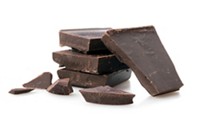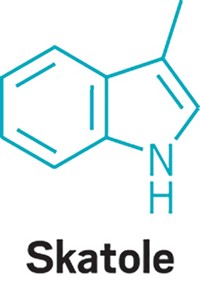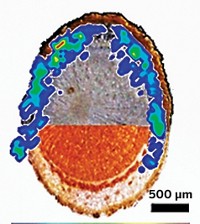Advertisement
Grab your lab coat. Let's get started
Welcome!
Welcome!
Create an account below to get 6 C&EN articles per month, receive newsletters and more - all free.
It seems this is your first time logging in online. Please enter the following information to continue.
As an ACS member you automatically get access to this site. All we need is few more details to create your reading experience.
Not you? Sign in with a different account.
Not you? Sign in with a different account.
ERROR 1
ERROR 1
ERROR 2
ERROR 2
ERROR 2
ERROR 2
ERROR 2
Password and Confirm password must match.
If you have an ACS member number, please enter it here so we can link this account to your membership. (optional)
ERROR 2
ACS values your privacy. By submitting your information, you are gaining access to C&EN and subscribing to our weekly newsletter. We use the information you provide to make your reading experience better, and we will never sell your data to third party members.
Food Science
Edible fungus yields new pineapple flavor molecule
The volatile compound replicates the aroma of hundreds of compounds in the real fruit
by Alla Katsnelson, special to C&EN
February 11, 2020

A fungus that bursts from the bark of birch trees can produce a volatile molecule with the sweet smell of pineapple—an aroma usually formed by a mixture of many compounds (J. Agric. Food Chem. 2019, DOI: 10.1021/acs.jafc.9b06105). The smell of the new molecule “is able to duplicate hundreds of compounds which are present in real pineapple flavor,” says Ralf G. Berger, a food chemist at Gottfried Wilhelm Leibniz University who led the team that discovered the molecule.
Berger, Miriam Grosse, and their colleagues discovered this flavor compound when they were testing out substrates for cultivating Fomitopsis betulina, an edible fungus commonly called the birch polypore. When they grew the fungus, they got a strong waft of a pineapple-and-honey-like aroma.
To find its source, they concentrated the volatiles from the fungus, purified them, and then analyzed the components with gas chromatography/mass spectrometry and nuclear magnetic resonance spectroscopy.
The researchers identified two stereoisomers of a molecule—(5E,7E,9)-decatrien-2-one and (5Z,7E,9)-decatrien-2-one—that had a strong pineapple aroma. The 5Z isomer could be perceived at a lower concentration, but the 5E isomer was much more abundant, they found. The researchers then set out to elucidate how the fungus makes 5E decatrienone. The compound appears to be a metabolite that’s generated when the synthesis of polyketides—which serve as pigments for the fungus—goes slightly awry (J. Agric. Food Chem. 2020, DOI: 10.1021/acs.jafc.9b07494).
Finding new flavors is rare, Berg says. For commercial purposes, it would be simpler to purify this single compound from fungal cultures than to extract multiple compounds from a pineapple—or to synthesize the right mixture. The researchers envision using the molecule as a fragrance in natural cosmetics.
It’s not the first time that edible mushrooms have produced new flavor compounds. Berg’s team recently identified a molecule that smells of black forest ham after it’s been smoked (Fungal Biol. 2017, DOI: 10.1016/j.funbio.2017.05.006). Fungi, he says, “are full of flavors.”






Join the conversation
Contact the reporter
Submit a Letter to the Editor for publication
Engage with us on Twitter